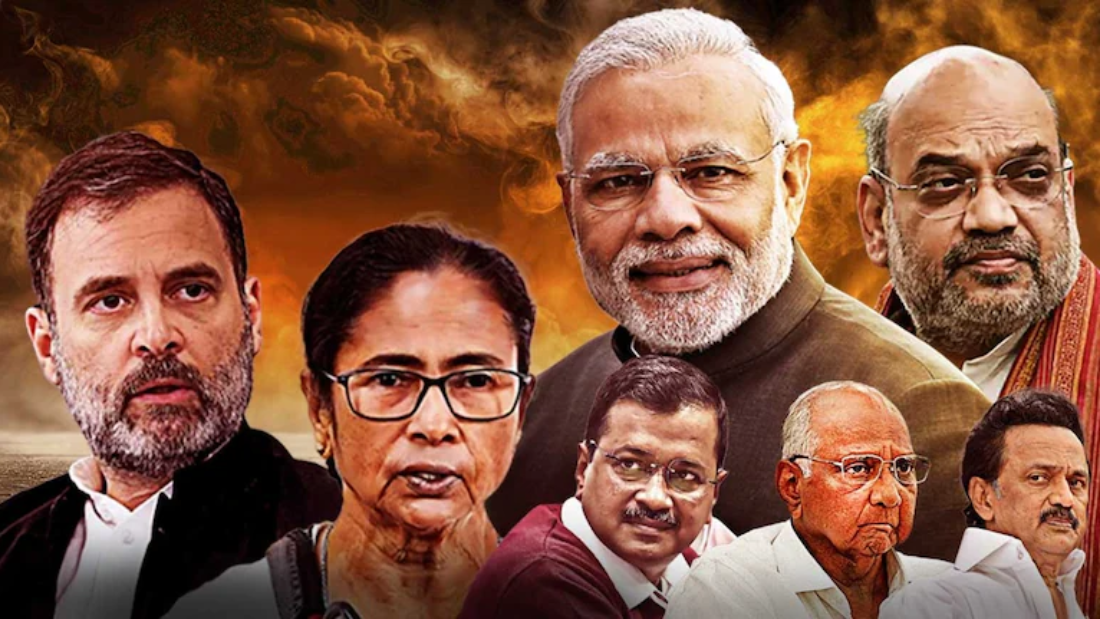The 2024 Indian elections were one of the most significant and closely watched electoral events in recent history. As the world’s largest democracy prepared for another round of voting, the political landscape was buzzing with activity. This blog delves into the critical aspects of the elections, exploring the key players, major issues, and the role of branding and marketing in shaping voter perceptions.
Key Players and Alliances
The 2024 Indian elections saw a fierce battle between the incumbent Bharatiya Janata Party (BJP), led by Prime Minister Narendra Modi, and the principal opposition party, the Indian National Congress (INC), led by Rahul Gandhi. Several regional parties and alliances, including the Shiv Sena (Uddhav Balasaheb Thackeray), the Nationalist Congress Party (NCP) led by Sharad Pawar, and the Trinamool Congress (TMC) led by Mamata Banerjee, also played crucial roles, especially in states like Maharashtra and West Bengal. Prime Minister Modi’s leadership and policies were scrutinized as he sought a third term, while Rahul Gandhi and the Congress party aimed to regain lost ground.
Major Issues at Stake
Economic Growth and Job Creation:
Economic development and employment generation remained critical issues. The electorate keenly evaluated the incumbent government’s performance on these fronts and the opposition’s promises to address economic challenges.
Healthcare and Education:
The COVID-19 pandemic highlighted the need for robust healthcare infrastructure and quality education. Voters looked for comprehensive plans to improve these essential sectors.
Environmental Concerns:
Climate change and environmental sustainability gained traction as significant electoral issues. Parties were expected to present their strategies for addressing pollution, deforestation, and sustainable development.
Social Justice and Equality:
Issues related to social justice, including caste-based reservations, gender equality, and minority rights, played a crucial role in shaping voter preferences.
The Role of Branding and Marketing
In the digital age, branding and marketing became indispensable tools in political campaigns. The 2024 Indian elections witnessed innovative strategies to engage and persuade voters.
Social Media Campaigns:
Political parties leveraged platforms like Facebook, Twitter, Instagram, and WhatsApp to reach a broader audience. Social media allowed for targeted messaging and real-time engagement with voters.
Content Marketing:
Content marketing, including blogs, videos, and infographics, helped parties disseminate their policies and achievements effectively. Engaging content influenced voter perceptions and drove support.
Brand Positioning:
Political branding involved creating a distinct identity and image for candidates and parties. The use of logos, slogans, and consistent messaging helped in brand recall and voter loyalty.
Data Analytics:
Data-driven marketing allowed parties to analyze voter behavior, preferences, and trends. This information helped tailor campaigns to address specific voter concerns and maximize impact.
Conclusion
The 2024 Indian elections were a defining moment for the nation’s democratic process. As political parties geared up for the electoral battle, the issues of economic growth, healthcare, education, environmental sustainability, and social justice dominated the discourse. The strategic use of branding and marketing played a pivotal role in shaping voter perceptions and influencing outcomes. The election, involving both the Lok Sabha and Vidhan Sabha seats, particularly in key states like Maharashtra, marked a significant chapter in India’s political history. Stay tuned for more updates and analyses as we reflect on this historic event.

